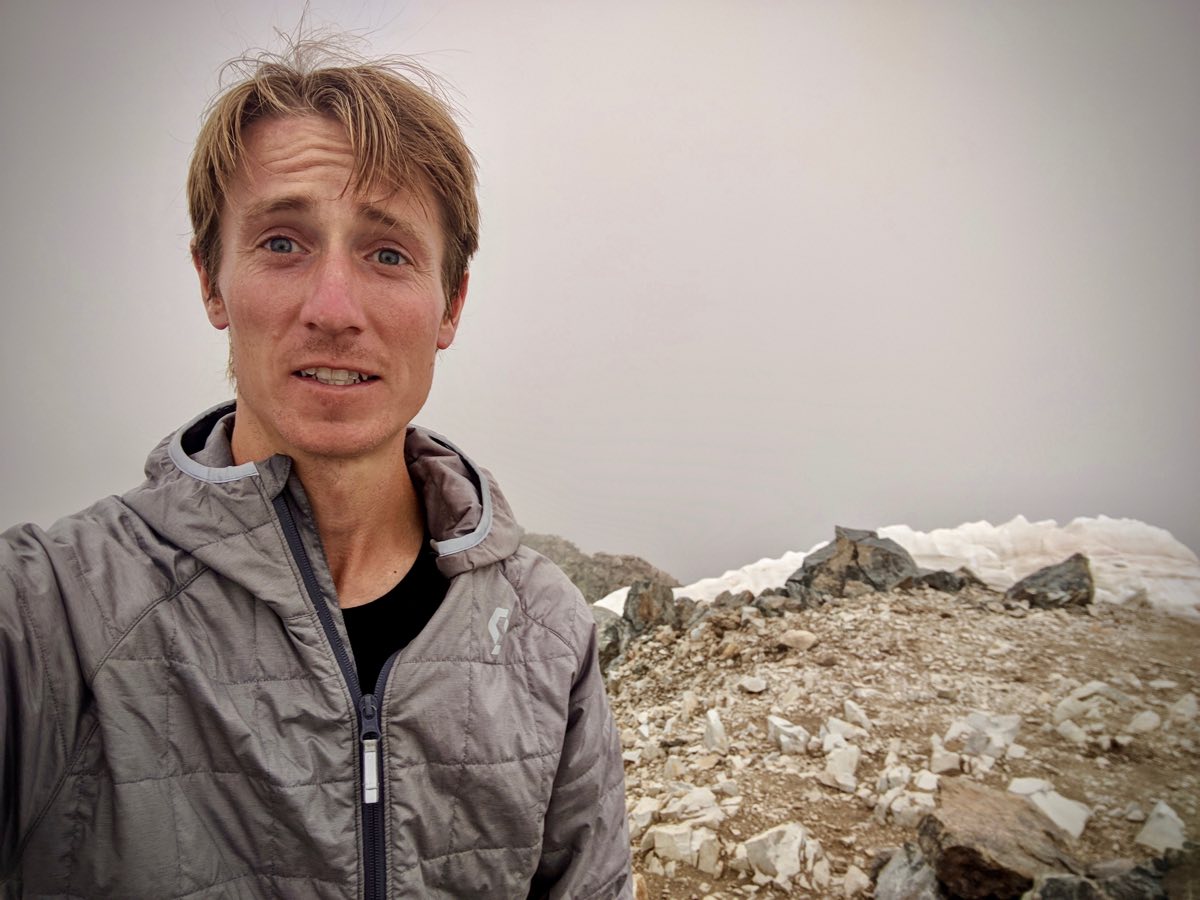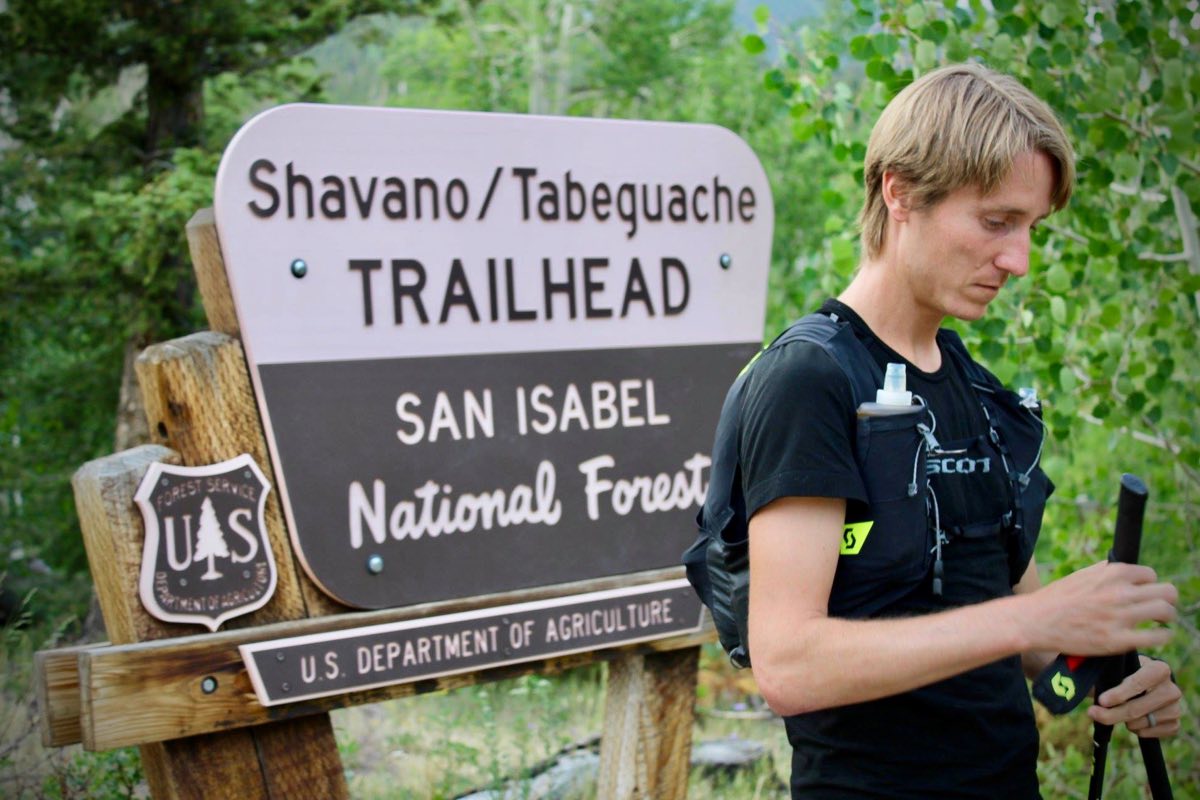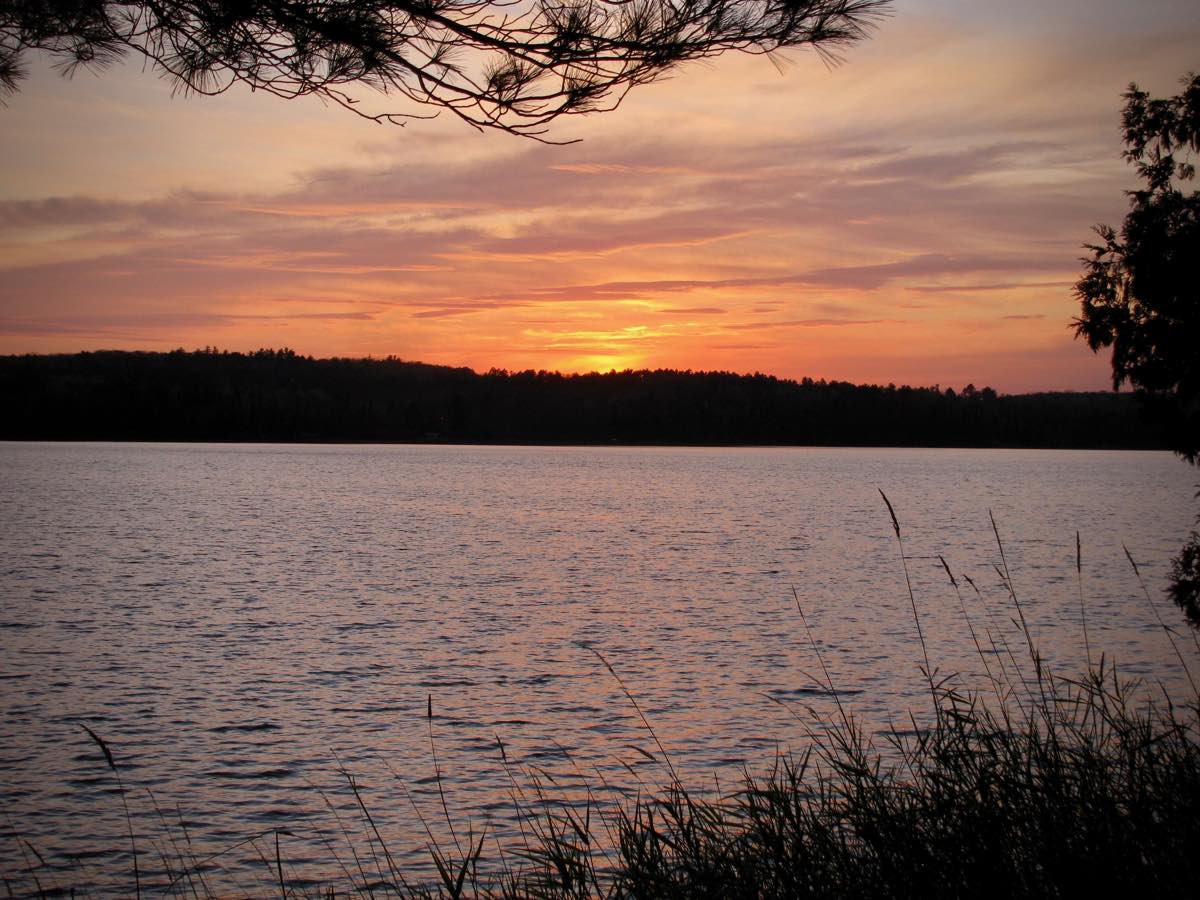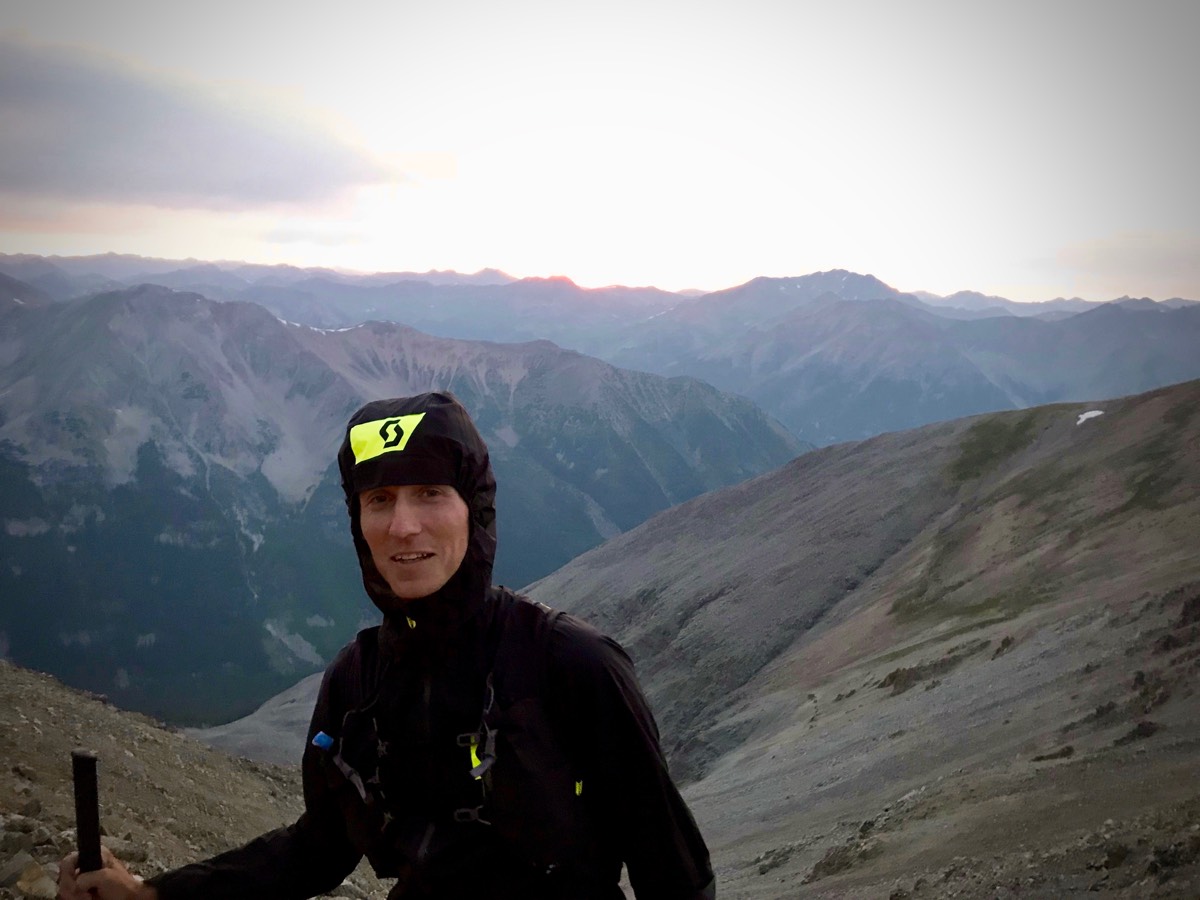It was 7:50 p.m. on June 27, 2018. The moon was beginning to rise and I was sitting on a stump at the Blanks Cabin Trailhead, at the base of Mount Shavano in the southern Sawatch Mountains of Colorado, eating one last piece of leftover black-bean quesadilla. My friend Peter Maksimow had just driven away from the dusty dirt parking lot. I was 10 minutes from starting my attempt of the Nolan’s 14 challenge, which would likely be the longest and most difficult endurance undertaking of my life. I was faced with the prospect of navigating and summiting 14 of Colorado’s 14,000-plus-foot peaks, in a route roughly 100 miles long and with over 45,000 feet of climbing, in less than 60 hours. If I could go faster, I might have a shot at Iker Karrera’s fastest known time of 47 hours and 40 minutes. Either way, it would be at least 30 hours longer than my biggest run ever. At that moment, there could have been a million thoughts swirling through my head, but instead, I was at peace.
Two weeks before that day, I had attempted to scout the Nolan’s 14 route over the course of a three-day light backpacking trip. Those three days were full of shifting talus fields, impossibly thick willow patches, and too many wrong turns to count. I didn’t even attempt to the final two mountains of the route going in the south to north direction, Mounts Elbert and Massive, because I was so worked over by the route and weather. That scouting trip gave me a reality check of what I would be in for when I attempted the whole thing at once. At the time it made me extremely worried.
Ten years ago, memories of that scouting trip would have ruined my sleep quality for the days or even weeks before my actual attempt. I would have spent time dwelling on the negative, thinking about all that could go wrong, and giving myself nightmares. I remember sleeping only a few hours a night during the week before my first U.S. Mountain Running Championships in 2009, and subsequently having a terrible race. As I’ve gained more experience, I’ve learned that overcoming my pre-race anxiety won’t happen by itself. With a few dedicated steps, I am able to control my nerves and make it to the start line more relaxed and rested. In the longer races, I use these same techniques to calm myself mid-race when something inevitably goes wrong like a missed aid station or wrong turn.

Alex scouting the Nolan’s 14 route in some rowdy weather on La Plata Peak. All photos courtesy of Alex Nichols unless otherwise noted.
The most effective method that I have found to control my pre-race anxiety is the combined use of imagery and breathing techniques. Parnabas, Mahamood, Parnabas, and Abdullah (2) found that imagery and controlled breathing have the ability to improve sport performance by reducing stress and feelings of anxiety. In my case, there has been a noticeable increase in performance because I have been able to calm myself and sleep better before races. For example, back in 2013 when I once again toed the line at the U.S. Mountain Running Championships, I came into the race with a full week of solid sleep and my pre-race anxiety in check. In 2009, I blew up midway through the race. In 2013, I stuck to my pre-race plan and moved up to earn a qualifying spot on the U.S. team to compete at the World Mountain Running Championships. Obviously there were many factors that went into those two races, but getting to the line rested and relaxed in 2013 gave me a big advantage that I was missing in 2009.
In order to develop your own relaxation techniques, the first thing to understand is that imagery is more than just visualization. In order for imagery to be effective, it needs to involve all of the senses and make you feel like you are truly experiencing the place you are imagining (1). It takes practice to develop these imagery skills, but as you become more proficient you should be able to calm yourself when you need it most.
What follows in the rest of this article is a basic guideline to help you develop your relaxation skills.
Step 1. Imagery
- Think back to something familiar, like having breakfast at home. It is helpful to start with something you are very familiar with to begin your imagery practice.
- Focus on the sights, smells, tastes, sounds, and even things you can touch. Give yourself enough time to fully absorb what that moment was like.
- After experiencing that moment for a few minutes, come back to your current reality.
- Use those same steps to focus on a place where you have felt completely peaceful in the past, such as your favorite spot to relax at home or on a beach during vacation. This is a place without concerns, negative thoughts, or deadlines, and it’s a place you remember feeling totally content and happy. Think about how it felt, looked, sounded, tasted, and smelled. Re-live that location and all of its details. The more detailed, the better.
- Once again, return to reality.
- Practice going back to your relaxation place. Make sure you can imagine every detail. Do this as many times as you need to feel like you are truly in that moment.
Step 2. Breathing and Using Your Cue Word
- The next step is to breathe in deeply through your nose, feel your diaphragm expand above your belly button, hold your breath for a quick moment, and then exhale through your mouth slowly. You might begin to feel your tension and stress go with those exhalations.
- Continue breathing like this, in through your nose and out through your mouth, as many times as you need to feel tranquil. Give it a few minutes.
- Keep breathing, but once you feel comfortable and peaceful, add in one word each time you breathe out that reminds you of your relaxation place. You can say it out loud when you breathe out.
- For 15 to 20 more breaths, use that cue word each time you exhale to imagine yourself in that relaxing place.
- That word will be your ticket to that relaxing place whenever you need it.
Step 3. Implementation
- Start practicing in some low-stakes situations. This could be when you are feeling overwhelmed at work or with regular life stress. The more you practice a few deep breaths with your cue word while imagining your relaxing place, the more effective the process will become. When you feel like you can quickly transport yourself to your relaxing place, you are ready to take this skill to running and racing.
- My nerves normally kick in a few days out from a race, when I start to look at course maps and plan my race strategy. Planning my race is always going to be a stressful time; there’s no avoiding it. But once I am done going over the details, I use my cue word to return to a more relaxed state. I think of it like flipping a switch. If the switch is left on for multiple days before the race, I will end up worn out before even starting.
- The next big hurdle for me is sleeping well the nights before the race. The evenings can be a time when my mind fixates on the race and inhibits good sleep. This is when I use imagery most frequently. Taking my mind off the race and on a more peaceful place is extremely helpful for my relaxation. I normally go through the imagery steps a few times each night.
- Finally on race day, I use these relaxation techniques in the moments before the race. In ultramarathons, pacing in the early stages is especially important. If I can relax and not get caught up in running too fast early on, I have found that the rest of the race goes much better.
- I also use my cue word and breathing during longer events when I feel myself starting to panic. This has happened when I have lost my drop bag, missed my planned race nutrition, or when I have gone off course. Being able to calm myself quickly allows me to think of a solution more clearly and get back on track mentally.
During the days leading up to my 2018 Nolan’s 14 attempt, I would feel anxiety creep into my mind and my focus would inevitably turn to the memories of my exhausting scouting trip. In those moments, I would go through these steps and take a trip to my peaceful place. In my case, my cue word is ‘relax.’ That word takes me back to paddling a canoe on a lake at sunset near my grandparents’ home in northern Michigan. Even as I sat on that stump at the trailhead in Colorado, my mind was on the lake in Michigan, watching the pines glowing golden in the setting sun. I continued to use these techniques throughout my time on the Nolan’s 14 route. Whenever I would find myself panicking because I was off course or wasting time, I would use my rapid relaxation process. That feeling of relaxation would allow me to regain my focus and move forward.
Just like any skill, the more you practice, the easier it will be to calm yourself when you are feeling anxious. Once you get this process down, you can use your cue word to quickly relax anytime you feel stressed–not just for races and big runs! Imagery can improve your performance, make even the most daunting efforts more manageable, and perhaps even enhance the rest of your life.
Call for Comments (from Meghan)
- Have you or do you use imagery before or during races? If so, how exactly do you employ the technique?
- If you were to choose a place from your past that feels completely peaceful for you to imagine during a run or race, what place or situation would that be?
- What other calming techniques do you use to calm pre- or during-race anxiety?
References
- Burton, D., & Raedeke, T. D. (2008). Sport psychology for coaches. Leeds: Human Kinetics.
- Parnabas, V. A., Mahamood, Y., Parnabas, J., & Abdullah, N. M. (2014). The relationship between relaxation techniques and sport performance. Universal Journal of Psychology, 2(3), 108–112.




